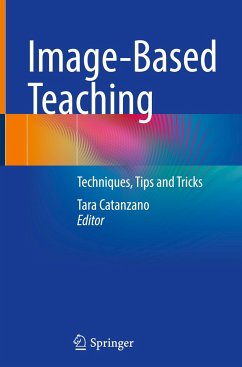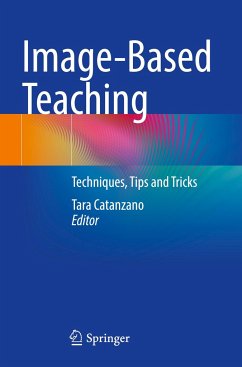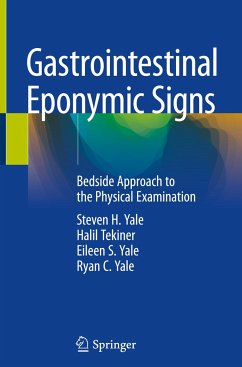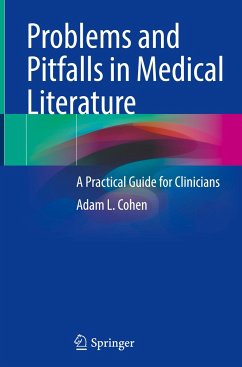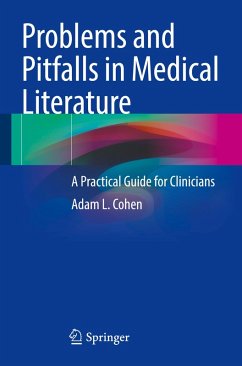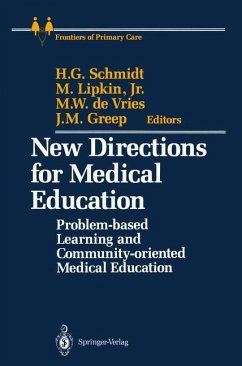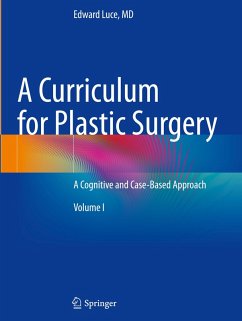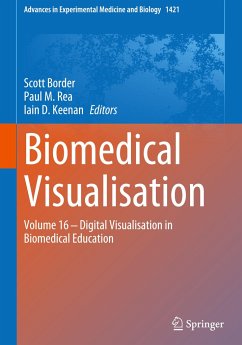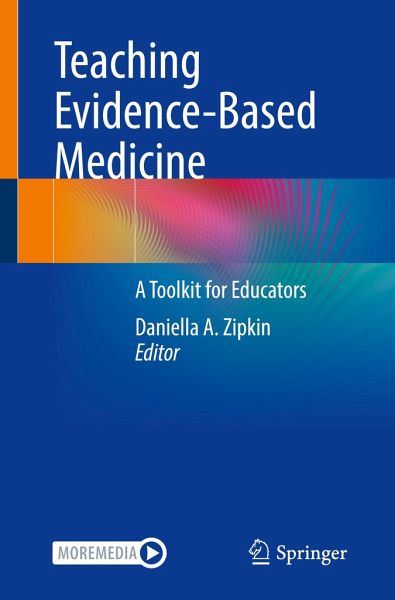
Teaching Evidence-Based Medicine
A Toolkit for Educators
Herausgegeben: Zipkin, Daniella A.

PAYBACK Punkte
45 °P sammeln!
Practicing evidence-based medicine is widely regarded both as best clinical practice, and as the cornerstone of meeting the ACGME competencies in Practice-Based Learning and Improvement. Training programs recognize the need to teach the skills of EBM and yet struggle with readily available content and guidance on putting together a curriculum. Time frames for delivering curricula in residency can be very tight, often restricted to scattered one hour conferences. This book provides a modular curriculum structure for instructors, with each topic area taking up one section, or one hour of instruc...
Practicing evidence-based medicine is widely regarded both as best clinical practice, and as the cornerstone of meeting the ACGME competencies in Practice-Based Learning and Improvement. Training programs recognize the need to teach the skills of EBM and yet struggle with readily available content and guidance on putting together a curriculum. Time frames for delivering curricula in residency can be very tight, often restricted to scattered one hour conferences. This book provides a modular curriculum structure for instructors, with each topic area taking up one section, or one hour of instructional time.
Developed over the past 14 years as an introductory course for interns in the internal medicine residency program at Duke, the curriculum will cover core content areas in evidence-based medicine and best teaching practices for them and skills such as literature searching and applying evidence to patients. Most importantly, it will center on actual patient questions and use current literature as examples that instructors can use as teaching exercises. There will also be ample diagrams that have been shown to be effective with learners and each module will include a video tutorial of a sample teaching session, including visual aids and small group teaching techniques. The curriculum can be implemented in any time frame necessary, compressed or longitudinal, to a variety of learners.
This is an ideal guide for residency program directors and core faculty, either within internal medicine or more broadly in family medicine, pediatrics, surgery, OB-gyn, as well as medical school faculty for use with students.
Developed over the past 14 years as an introductory course for interns in the internal medicine residency program at Duke, the curriculum will cover core content areas in evidence-based medicine and best teaching practices for them and skills such as literature searching and applying evidence to patients. Most importantly, it will center on actual patient questions and use current literature as examples that instructors can use as teaching exercises. There will also be ample diagrams that have been shown to be effective with learners and each module will include a video tutorial of a sample teaching session, including visual aids and small group teaching techniques. The curriculum can be implemented in any time frame necessary, compressed or longitudinal, to a variety of learners.
This is an ideal guide for residency program directors and core faculty, either within internal medicine or more broadly in family medicine, pediatrics, surgery, OB-gyn, as well as medical school faculty for use with students.




